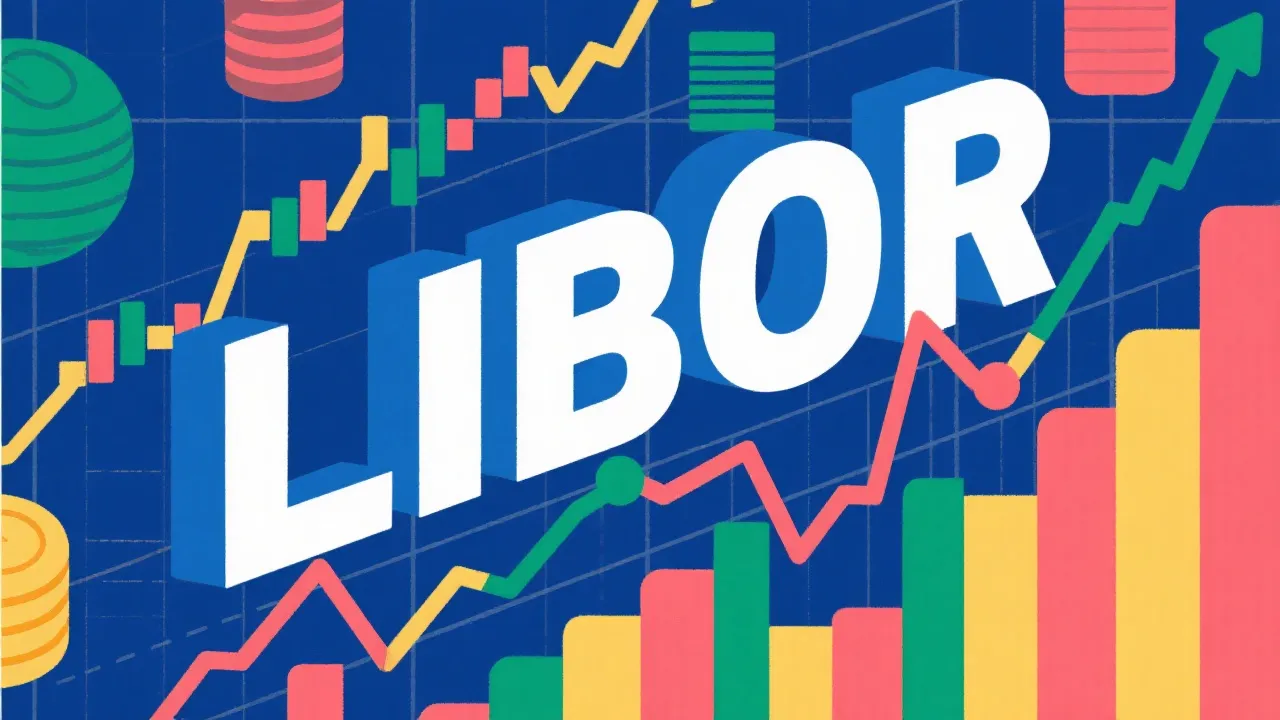The Impact of Bba Libor on Financial Markets
The Bba Libor, or London Interbank Offered Rate, has long served as a benchmark interest rate in global finance, affecting everything from mortgages to financial derivatives. This article delves into its influence on financial markets, while examining its historical evolution and subsequent challenges amid regulatory changes. Experts provide insights into how these developments shape future financial landscapes.

Understanding Bba Libor: A Financial Cornerstone
The BBA Libor, an acronym for the British Bankers’ Association Libor, stands as a critical component in global finance, impacting the rates applied to mortgages, loans, and derivatives. As a daily average interest rate calculated by leading banks in London, it signifies what each bank expects to be charged by another. This rate is fundamental in countless financial transactions, given its wide acceptance and usage as a benchmark in financial contracts worth trillions of dollars worldwide. The very framework of international finance heavily relies on the consistent and reliable data that Libor provides, facilitating everything from individual home loans to massive corporate financing deals.
The Historical Context and Evolution
Introduced in the 1980s, the BBA Libor was designed to offer a standardized measure of the average interest rate at which major global banks could borrow unsecured funds from each other. This calculation typically involved major currencies including the US Dollar, Euro, British Pound, and Japanese Yen. Over the years, it evolved into the predominant global benchmark for short-term interest rates.
Initially, Libor served as a tool to enhance market efficiency and help in pricing loans — allowing banks to gauge the health of the lending environment and set rates accordingly. As financial products became more complex, the role of Libor expanded. The rate began to affect a wide range of financial instruments, including interest rate swaps, futures contracts, and various derivative products, thus embedding itself deeply into the fabric of the financial system.
However, the Libor's popularity was not without challenges. The 2008 financial crisis prompted scrutiny over its reliability and transparency, leading to significant reforms. Reports of manipulation and false reporting of rates by contributing banks emerged, resulting in legal reforms and stricter oversight by financial authorities. These revelations highlighted a catastrophic gap in trustworthiness, which would eventually necessitate comprehensive changes to the landscape of financial benchmarking.
Libor Scandals and the Push for Reform
Major scandals tarnished Libor's reputation, notably between 2008 and 2012, when several international banks were found guilty of manipulating rates to favor trading positions. The implications were vast, leading to substantial fines, criminal charges against traders, and a loss of trust in this key financial benchmark. The transparency issues surrounding Libor were exacerbated by the internal cultures within these institutions, where profit motives overshadowed ethical considerations.
In response to this turmoil, regulatory frameworks were tightened, and by 2014, governance of Libor shifted from the BBA to the ICE Benchmark Administration. This change aimed to improve the accuracy and oversight of the rate-setting process. One of the significant advancements was the implementation of more stringent methodologies for rate calculation, focusing on transaction-based data instead of purely on estimates provided by the banks, who were incentivized to report lower rates for their advantage. This recalibration was essential to restoring confidence among market participants and regulators, setting the stage for a more resilient financial environment.
The Future of Financial Benchmarking: Beyond Libor
With the credibility of Libor compromised, global financial markets have gradually been steering away from the BBA Libor. Alternative benchmarks such as the Secured Overnight Financing Rate (SOFR) in the US, the Sterling Overnight Index Average (SONIA) in the UK, and the Euro Short-Term Rate (ESTR) in the Eurozone have been developed to provide more transparent and reliable benchmarks. Each of these new rates has been designed with transparency and accuracy in mind, reflecting real economic activity rather than based on estimates.
These newer benchmarks are based on actual transactions rather than estimates, aiming to eliminate the potential for manipulation inherent in the Libor system. For instance, SOFR is calculated using a wide variety of transactions in the overnight repurchase agreement (repo) market, which involves financial institutions and various investors lending and borrowing money secured against Treasury securities. By relying on this transactional data, SOFR has emerged as a solid alternative. Transitioning to these new benchmarks has proven complex, requiring significant overhaul of financial contracts and systems, yet it is widely deemed necessary for a more secure financial landscape.
Key Challenges in the Transition
Transitioning away from BBA Libor involves several challenges, chiefly the implementation across various jurisdictions with differing legal architectures. Financial institutions, long reliant on Libor as a universal benchmark, now must adapt to alternative rates, which may differ across financial products and regions. There is considerable concern surrounding the 'tough legacy' of contracts devoid of fallback provisions that were initially linked to Libor, which could lead to significant legal disputes and confusion.
This transition has major implications not just for pricing products but also for risk management strategies of financial institutions. The complexity is amplified by the fact that different instruments might require different transition strategies and timelines, complicating compliance and operational changes. Moreover, addressing these tough legacies requires ongoing guidance from regulatory bodies, collaborative discussions among market participants, and careful crafting of new contractual frameworks aimed at ensuring that switching rates does not disadvantage clients or institutions.
| Benchmark Rate | Description |
|---|---|
| SOFR | The Secured Overnight Financing Rate, a transparent alternative for US markets, based on real trades. |
| SONIA | The Sterling Overnight Index Average, the UK's approach for an overnight interest rate benchmark. |
| ESTR | The Euro Short-Term Rate, used within the Eurozone, reflecting overnight funding costs. |
Expert Insights on the Transition
Industry experts highlight the necessity of this transition, with a focus on ensuring market integrity and stability. As financial institutions and regulatory bodies work towards a systematic shift, the importance of clear regulatory guidelines cannot be overstated. Collaboration across all sectors involved is key to synchronizing the transition efficiently and effectively.
Furthermore, market players must realign financial operations and documentation to comply with alternative benchmarks, requiring comprehensive training and recalibration of risk management protocols. Significant investments in technology and infrastructure are instrumental in facilitating a seamless transition. Financial institutions are urged to assess their existing systems, execute the integration of new benchmark rates, and continue to communicate transparently with their stakeholders throughout the transition process to foster trust and understanding.
FAQs
Why was Libor replaced?
Libor was replaced due to scandals and doubts over its reliability and susceptibility to manipulation, prompting the need for more secure and transparent financial benchmarks. The necessity for reform became apparent following the financial crisis, which highlighted the critical vulnerabilities in financial structures that relied on the unstable Libor calculations.
What impact does this have on financial markets?
The shift impacts contract valuation, risk management, and financial product pricing, necessitating substantial adjustments within financial institutions. Stakeholders must understand how the transition will affect various financial instruments, from consumer mortgages to complex derivatives that operate in a much larger, international market.
How are new benchmarks like SOFR different?
New benchmarks like SOFR rely on transactional data rather than expert judgment, enhancing transparency and security in financial markets. Unlike Libor, which was often based on subjective assessments of borrowed rates, SOFR and similar benchmarks reflect real-world borrowings, grounding their calculations in observable economic activity.
Conclusion: Looking Ahead
While the move from BBA Libor to new benchmark rates represents a seismic shift in financial markets, it underscores a pivotal evolution towards more reliable and transparent financial practices. Adapting to these changes is crucial for sustaining the integrity and growth of global finance moving forward. From a strategic standpoint, these developments are expected to foster trust and stability, ensuring the market's resilience against future challenges. Moreover, the transition to alternative benchmarks such as SOFR will shape future financial product offerings and pricing strategies for years to come, prompting ongoing discussions among regulators, market participants, and policymakers about the best practices for a more fulsome and reliable financial ecosystem.
In essence, the evolution from BBA Libor toward alternatives signifies not just a shift in numerical references but an overall enhancement of the financial system's framework, designed to be more adaptive, transparent, and reflective of true market conditions. As the demands of modern finance continue to evolve, the integrity of financial benchmarks will remain a fundamental concern, shaping policy, strategy, and trust in the financial markets.
Understanding this evolution is essential not only for financial professionals but also for individuals engaged in financial activities, empowering them to navigate the complexities of this changing landscape with informed insights and perspectives. The future of financial benchmarking promises to be characterized by closer alignment to real economic activities, leading to enhanced market stability, reduced risk of manipulation, and ultimately a more secure financial future for all stakeholders involved.










